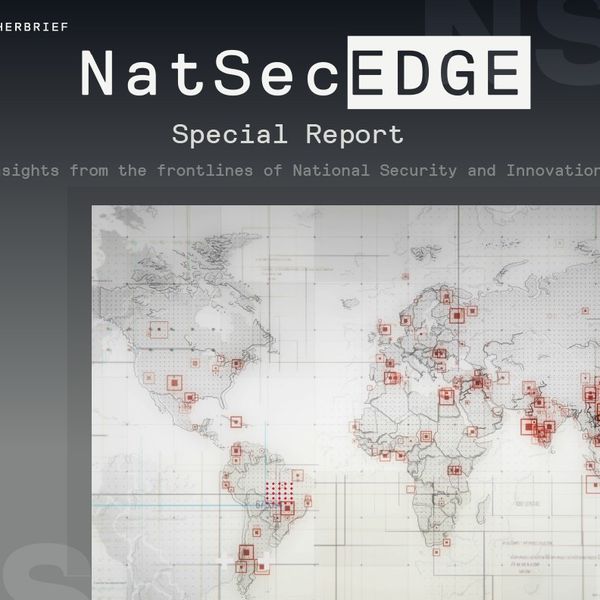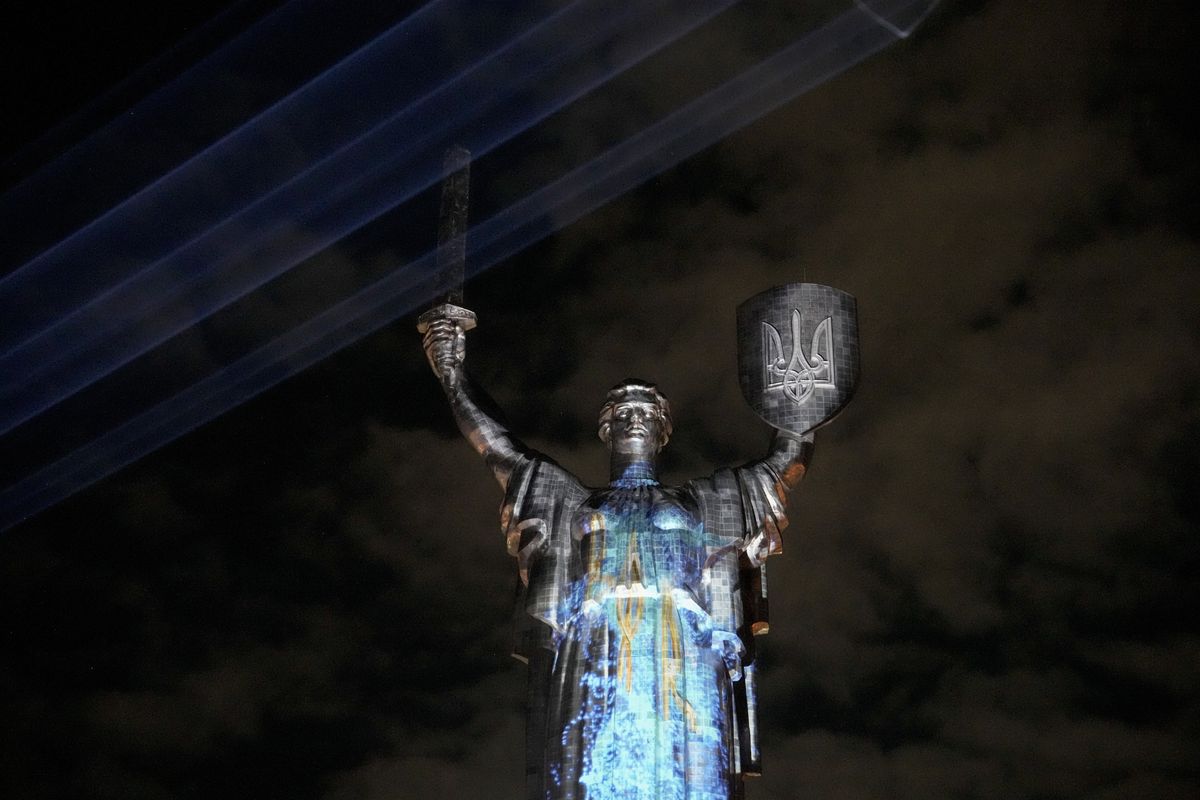EXPERT PERSPECTIVE – Ukrainian technology expositions are abuzz with enterprise and excitement. I have watched unmanned systems glide through preprogrammed routes or clamber over rough terrain, autonomously hunting and “neutralizing” mock targets. These are powerful displays of Ukrainian ingenuity. And the message from experts is clear: Ukraine is the template for future war.
But “a template for future war” doesn’t capture the full story. Nearly every Ukrainian commander I have met with on my multiple trips to Ukraine has voiced serious frustrations. “Western drones,” one regimental commander told me flatly, ” fail the second they encounter Russian jamming. They’re expensive, and most companies don’t listen when we point out their flaws.”
I have stood for many hours in freezing cold, wind-swept Ukrainian fields, watching drones achieve almost unbelievable feats. Ukrainian ingenuity has exploded since Russia’s full-scale invasion in 2022, but what I have seen convinces me that Ukraine isn’t the straightforward blueprint for the future of unmanned systems warfare that many believe it to be.
Former Senior CIA Officer Ralph Goff told The Times that the U.S. has given Ukraine enough to bleed, but not enough to win. Yes, America and others have supplied advanced equipment providing Ukraine fleeting tactical victories. But no single piece of military equipment, no matter how sophisticated, delivers decisive victory for Ukraine—or any nation in future wars.
The war that is raging across Ukraine right now is not just a technology race; it’s a brutal, high-speed battle of adaptation. Military advantages come from innovating tactics faster, driving operations based on battlefield understanding, not just advanced weapons. One side unveils a new weapon, gaining a fleeting advantage. Almost instantly, the other side innovates, and the new technology forfeits its magic. The cycle is relentless.
The intersection of technology, defense, space and intelligence is critical to future U.S. national security. Join The Cipher Brief on June 5th and 6th in Austin, Texas for the NatSecEDGE conference. Find out how to get an invitation to this invite-only event at natsecedge.com
So, what is the path to a decisive advantage? It’s not about isolated pieces of technology. Victory will go to whichever side masters the art of weaving all their assets—drones, sensors, troops, and intelligence—into a single, coherent fighting system. The power of future unmanned technology won’t be in the individual brilliance of the machines, but in our ability to choreograph, making every capability coalesce into a single, devastating strategic focus across the battlespace. That’s where the fight for the future lies.
My own deployments hammered this home. I marveled at Tactical Operations Centers with walls blazing with high-definition video, a constant stream of enemy movements from every conceivable angle. But the giant screens did not provide the military advantage. It was the analysts whose eyes were glued to intelligence feeds day and night. They waded through torrents of incoming data, spotted the flicker of critical indicators, connected seemingly random information, and essentially determined where and when to focus operations. Their ability to make sense of chaos and to anticipate enemy movements was the combat multiplier, not the technology.
And that human-led synchronization, that tremendous ability to turn a flood of information into decisive action, will be the differentiator in future warfare. I see this with clarity, especially as every military now scrambles to incorporate unmanned systems, lowering risks, conducting deadlier strikes, and reducing the cost of warfare.
But here is the reality in Ukraine. A Ukrainian commander recently explained that his unit flies 1,200 drone missions a day across a 130-kilometer stretch of front line. Let that sink in.
When I was deployed with a special operations joint task force at the height of the fight against the Islamic State, we considered ourselves fortunate to have twenty drone missions daily. The scale of today’s unmanned systems is overwhelming. The lesson here is not about sending more drones. We must build smart systems to digest tremendous quantities of data and quickly translate information into battlefield dominance.
So, if flooding the battlefield with more drones is not the path to victory, what is?
From my perspective, having unmanned systems everywhere will only result in short-term tactical successes, but not strategic victory. What will really decide who emerges victorious from future fights is the intelligence drawn from ubiquitous autonomous unmanned systems, improved sensors, and from artificial intelligence, all synchronized with advanced weapons into an integrated capability.
Improved sensors will not just see but will perceive—cutting through ambiguity in ways our legacy systems are currently not able to do. This technology exists in Ukraine: commercial sensor technology, adapted for combat, that leaves what we relied on during the War on Terror behind. The clarity and richness of information is revolutionary.
The Cipher Brief brings expert-level context to national and global security stories. It’s never been more important to understand what’s happening in the world. Upgrade your access to exclusive content by becoming a subscriber.
Now consider autonomy. This is rapidly becoming battlefield reality. Future systems shift from one human painstakingly piloting one drone, to a single operator orchestrating an entire swarm. Ukrainians are already pushing the envelope with autonomous drone swarms – hundreds of air, land, and sea drones acting in concert, autonomously making tactical decisions, reacting to opportunities with or without a human in the loop. That again is a revolutionary jump in combat power.
Artificial Intelligence can instantly process the deluge of data into coherent understanding. Think back to the brilliant, but overworked analysts I saw working day and night in our tactical operations centers. AI is poised to become their force multiplier—sifting through data at machine speed, detecting subtle patterns and making connections that a human might miss, especially through overworked eyes, to identify fleeting opportunities. This will not negate the importance of commanders. Instead, AI will arm commanders with critical insights necessary to synchronize a myriad of capabilities and create devastating effects across the battlespace.
All these powerful pieces—the groundbreaking sensors, the self-directing swarms, the AI—are being employed in modern combat in Ukraine. But right now, they’re mostly operating in stove pipes, each sequestered from the other, operating in technological silos. The vital nervous system needed to fuse their individual brilliance into a cohesive, battlefield-dominating whole, that will enable commanders to truly understand and synchronize the fight, is often absent.
War remains the most ferocious engine of innovation any of us have ever witnessed. What the Ukrainian armed forces have accomplished in over three years of brutal, relentless attacks is, by any measure, astounding. They have demonstrated incredible tech acumen, staring down a Goliath—a vastly better-resourced, larger, and supposedly more advanced enemy—and not just holding, but often punching back with stunning ingenuity. The Ukrainians’ ability to adapt and innovate under fire is a powerful testament to what’s possible.
Understanding these current limitations and burgeoning capabilities brings Goff’s observation into focus, especially regarding the future interplay of Ukrainian innovation and Western military potential.
The U.S. has not sent Ukraine our most advanced systems. The challenge with Ukraine receiving military aid from multiple countries while simultaneously scaling their own defense manufacturing is the extraordinary challenge of employing everything as the system of systems which is needed to win.
Meanwhile, the West is learning lessons from this conflict and upgrading our own fighting capabilities. Our most formidable assets—Gen V fighters, advanced long-range precision artillery, Special Operations Forces—have been deliberately kept out of this modern crucible.
What happens when these streams converge? Imagine those incredible, battle-forged unmanned systems—Ukrainian innovations born from three relentless years of combat—not fighting as singular capabilities, but unleashed in concert with top-tier, military might.
When the unmanned systems innovation we have witnessed in Ukraine is fused with the full, unbridled force of advanced airpower, precision fires, and special operations forces, all operating with unity of effort, the world will see a synchronized and terrifying level of speed and precision lethality we cannot yet truly conceive.
Are you Subscribed to The Cipher Brief’s Digital Channel on YouTube? There is no better place to get clear perspectives from deeply-experienced national security experts.
Read more expert-driven national security insights, perspective and analysis in The Cipher Brief because National Security is Everyone’s Business.













